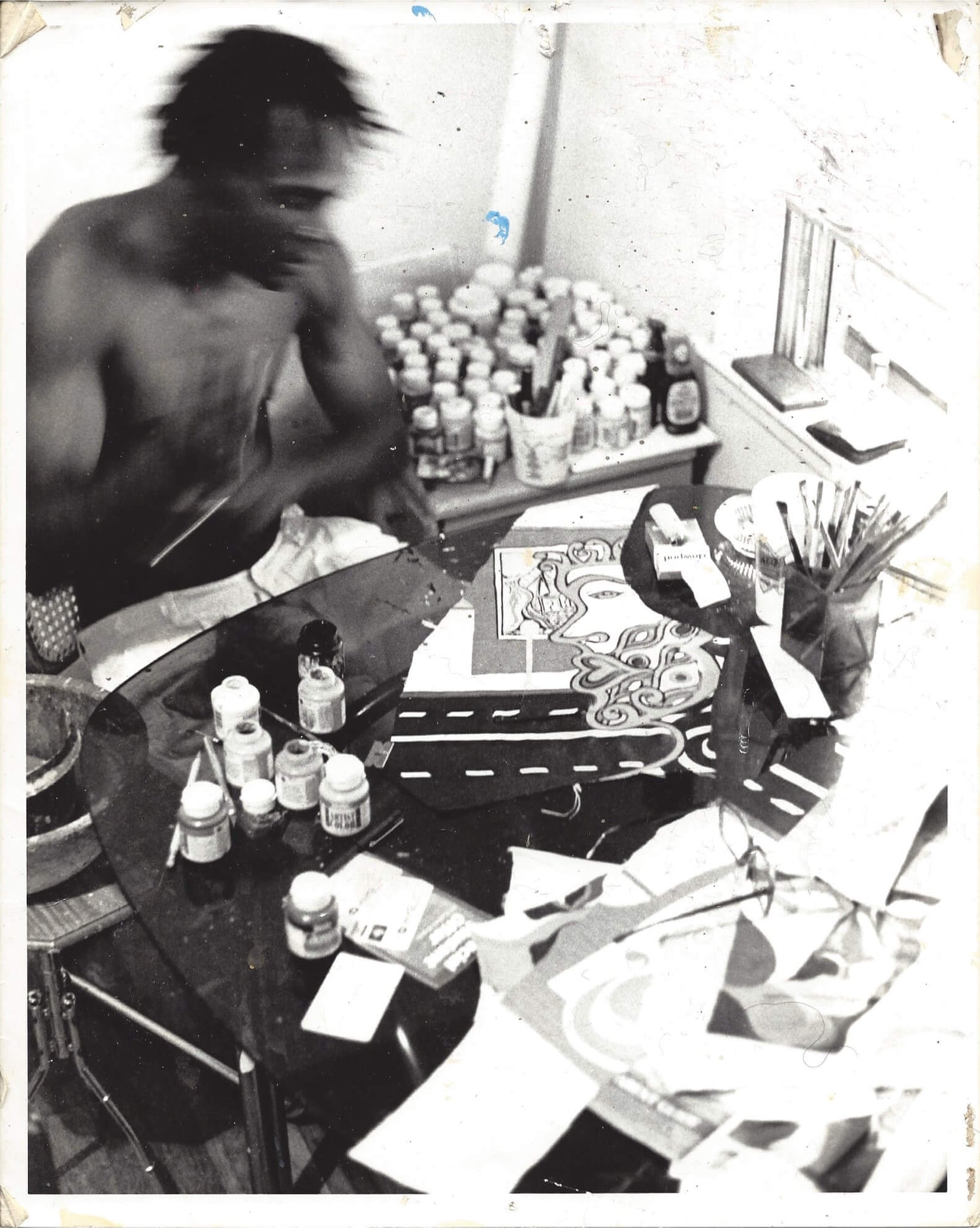
Jimmy Black, a contemporary visual artist known for his fusion of urban imagery and characteristics into his vibrant artwork, was born on January 1st, 1964 in Birmingham, Al . His artistic journey has been a celebration of the rich tapestry of African culture and a testament to the power of visual storytelling.
Growing up in the south , Jimmy was immersed in a kaleidoscope of colors, sounds, and traditions that would later shape his art. His early career saw him experimenting with traditional African art forms, combined with pop imagery to create landscapes devoted to the urban experience.
Jimmy first gained notoriety as a fashion designer while living in Atlanta, Ga. There he designed clothing for many notable artists, such as Peabo Bryson, Arsenio Hall, and Steven Tyler of Aerosmith, who wore his designs on the 2nd annual MTV Music Awards. After a successful run as a designer he switched his focus to the Atlanta nightlife scene. After several years of producing successful events for Club Velvet in Atlanta, propelling the venue to the #3 spot in Detail and People Magazine’s annual hottest night club ranking, Jimmy turned his attention back to painting full time.
Acrylic on canvas became his medium of choice with an emphasis on pop contemporary culture. In 1998, Jimmy moved to New York to seek new challenges and to incorporate some of his life lessons into his art. In 2011, Jimmy moved west to explore the psychedelic art scene made famous by the music movement of the 60’s Fillmore District.
Jimmy’s art seamlessly blends modern pop art with traditional African aesthetics. He masterfully incorporates African features and characteristics into his work, using bold, vibrant colors and intricate patterns to create striking visuals.
Jimmy’s acclaimed WildFlower Series incorporates aboriginal masks, traditional tattoo art, and psychedelic motifs to create a garden dedicated to humanity.
Each flower represents the people from the region each mask is taken from. The flowers also incorporate scarification and traditional markings to further identify each group. Traditional textile motif are also featured inside the petals of the flower to complete the composition.
Jimmy’s art not only captivates the viewer but also serves as a powerful vehicle for cultural exchange and understanding. His work challenges preconceived notions about people, promoting a more inclusive and diverse representation of humanity in a global art scene. Jimmy continues to inspire emerging artists, ensuring his legacy lives on through the next generation of creatives.
